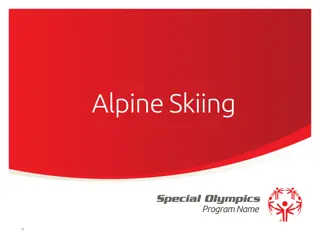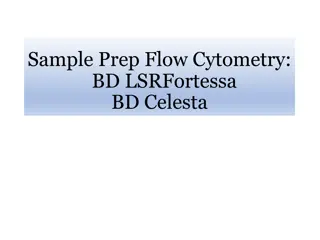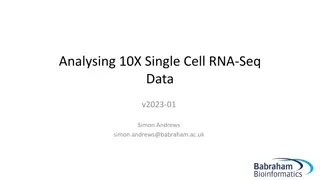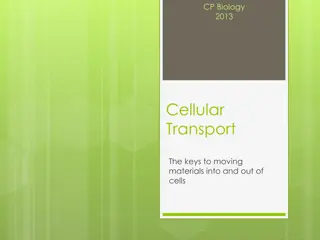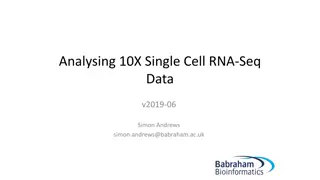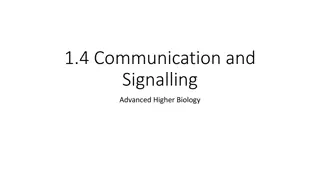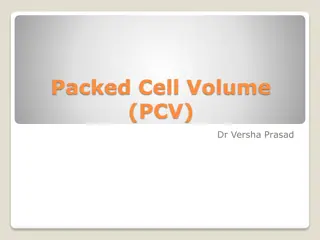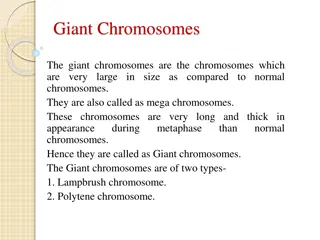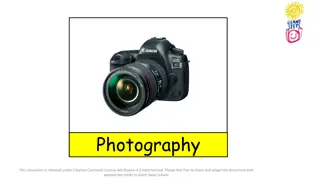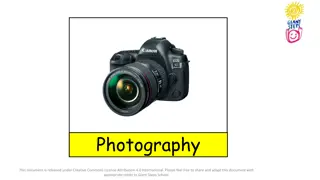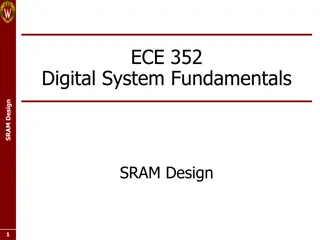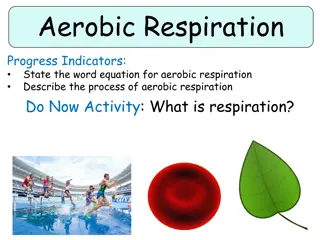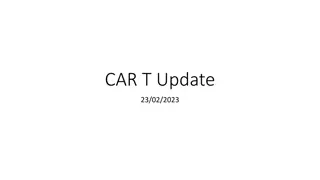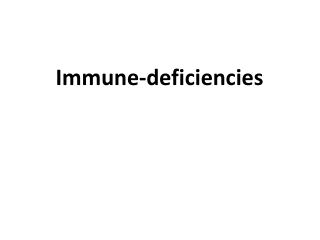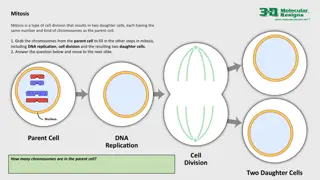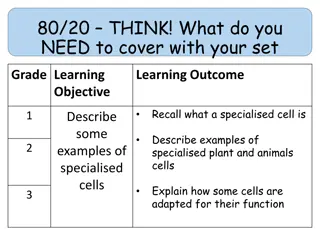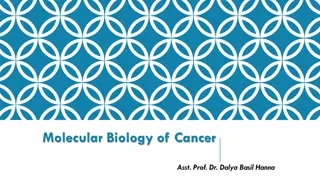Polymyalgia and Giant Cell Arteritis Overview
This informative content covers key clinical features, investigations, management, and differential diagnoses of Polymyalgia Rheumatica and Giant Cell Arteritis. It includes details on PMR and GCA guidelines, core clinical features, signs indicating other causes, possible differentials, and recommended investigations and management strategies.
Download Presentation

Please find below an Image/Link to download the presentation.
The content on the website is provided AS IS for your information and personal use only. It may not be sold, licensed, or shared on other websites without obtaining consent from the author. Download presentation by click this link. If you encounter any issues during the download, it is possible that the publisher has removed the file from their server.
E N D
Presentation Transcript
Polymyalgia and Giant Cell Arteritis Clare Thornton February 2018
Contents Introduction to new guidelines PMR key clinical features Investigation and differential Management and referral GCA key clinical features Investigation and differential Management and referral
PMR and GCA guidelines Developed for City and Hackney CCG Josh Cullimore, Claire Gorman, Piero Reynolds and Clare Thornton Agreed within Medicine Division and Clinical Effectiveness Committee
Polymyalgia Rheumatica Incidence approx 50/ 100 000 people aged 50 yrs or older (1 case every 2 yrs in GP list of 1000 aged over 50) Prevalence approx 0.5% Inflammatory peri-arthritis/ bursitis Aetiology unknown Overlap with GCA and late-onset rheumatoid
Core clinical features Age over 60 (occasionally 50-60) Symptoms for 3 weeks or more (excludes infection) Bilateral shoulder/ upper arm pain and/or pelvic girdle pain Morning stiffness 1h or more Raised CRP Rapid symptomatic and biochemical response to glucocorticoids
Signs that suggest another cause Muscle weakness Young age Small joint involvement Demonstrable limitation in range of movement at shoulders ESR raised alone Poor response to steroids
Differential diagnoses Osteoarthritis (+ incidental raised ESR) Rotator cuff tendinopathy or adhesive capsulitis Rheumatoid arthritis Paraproteinaemias Myopathy/ myositis Occult infection (TB, endocarditis, etc) Lymphoma
Investigations CRP Not ESR alone not specific for systemic inflammation Chest Xray +/- CK, vitamin D, RF, anti-CCP, Igs and serum electrophoresis +/- shoulder and hip Xrays
Management No clinical urgency to treat if no symptoms GCA Prednisolone 15mg 20mg daily Response with first dose, complete within 2-7 days Maintain for 2-4 weeks Gradual taper 2.5mg every 4 weeks until 10mg, then 1mg/ month Treatment for 12-18 months normal
When to refer to rheumatology Diagnostic uncertainty If poor response to steroids If unable to taper dose below pred 7.5mg daily using schedule previously Advice and guidance on e-RS Via secretary
Other considerations Bone protection: adequate calcium and Vitamin D in all Start bisphosphonate if > 65 or previous # DEXA if < 65 and bisphosphonate if T<-1.5 Gastric protection Monitor diabetic control Flu and pneumonia vaccinations
Giant Cell Arteritis Incidence in >50s approx 20/100 000 1 case every 5 years per 1000 pts > 50y Mostly occurs in over 60s, peaking at Very rare in < 50 yrs Commonest in northern Europeans (Viking descent most common) Sudden onset blindness most feared complication
Management algorithm In patient with suspected GCA Assess according to diagnostic criteria +/- associated visual symptoms No criteria Look for alternative diagnosis Immediate steroid treatment not indicated One or more criteria Commence Prednisolone 40mg O.D and Aspirin 75mg O.D Refer to Rheumatology One or more criteria and visual symptoms Refer to HAMU for urgent treatment
Diagnostic criteria Age > 50y Raised CRP (avoid ESR) Persistent headache of recent onset Scalp tenderness localised to the temporal artery (+/- thickened pulseless artery) Visual symptoms: monocular blindness, quadrant blindness, amaurosis fugax
Differential diagnosis Herpes zoster trigeminal nerve Temporomandibular joint arthritis Referred pain from cervical disc prolapse Dental abscess Sinusitis Ocular pathology
Management If one or more criteria is met, start pred 40 and aspirin and refer urgently to rheumatology If visual disturbance, start pred 60 and refer same day to medical registrar or HAMU
GOUT Josh Cullimore, GP Clinical Lead for Rheumatology
DIAGNOSIS Evidence of urate crystals on joint aspirate would be gold standard. A typical history : rapid onset, severe joint pain reaching its maximum over 6 - 12 hours, with swelling and erythema. 50-75% of cases affect the first MTP joint (known as Podagra) but other common joints are mid-foot, ankle, finger joints, wrists and elbows. Tophi also support diagnosis. Serum urate does not have to be raised to make a diagnosis of gout.
EXCLUDE SEPTIC ARTHRITIS Red flags: systemic features, gradual onset of pain, and not improving after 3-4 days of treatment. If septic arthritis suspected, refer to Orthopaedics immediately as an emergency
RISK FACTORS Stop or change any precipitating treatment if appropriate. Common precipitating drugs include loop and thiazide diuretics, aspirin, and some cytotoxic drugs Screen for heart disease, metabolic syndrome, CKD, hypertension and diabetes. Perform BP, BMI, U&Es, HbAIc and lipids and ask about smoking. Screen for alcohol intake. Beer and spirits in particular increase risk of gout. Advise patients to reduce alcohol intake if necessary High fructose (in many fizzy drinks), seafood and meat consumption also increase the risk. Overweight patients should be counselled on diet and weight loss. Onset of gout aged less than 30 suggests renal or enzymatic disorders, is often associated with genetic disorders and may require more aggressive investigation and treatment.
TREATMENT Treat Acute Attack as early as possible: 1st line is an NSAID (if no contraindications) and PPI until attack has resolved eg Naproxen 500 mgs bd. 2nd line is Colchicine, if NSAIDs are contraindicated, not tolerated, ineffective in previous attacks or if patient prefers this to NSAIDs. Use Colchicine 500 mcgs twice a day for up to 2 weeks. 3rd line is Prednisolone, if both NSAIDs and Colchicine are contraindicated or not tolerated. Use 30 mgs OD for 7 days then stop. Intramuscular steroid can also be considered (eg Methylprednisolone 120 mg IM stat) 4 th line: Combination of both NSAID and Colchicine or NSAID and Prednisolone
TREATMENT CTD. If large joints are affected (e.g. knee, ankle): Aspirate, send synovial fluid for MCS (to rule out sepsis) and monosodium urate crystal testing, and inject with steroid. If no one in the practice is able to do this, discuss with the rheumatology registrar on call or HAMU consultant to arrange. Review patient 4-6 weeks after acute attack, including measurement of uric acid DO NOT STOP ALLOPURINOL IN AN ACUTE ATTACK
PROPHYLAXIS Offer prophylaxis with Allopurinol if the patient has: 2 or more attacks of gout in a 12 month period Tophi Joint damage Renal impairment (EGFR<60) A history of urolithiasis Primary gout starting at a young age Risk factors that cannot be modified such as chronic diuretic use.
PROPHYLAXIS CTD Allopurinol should be started 2-4 weeks after an attack of gout. Check U&Es and serum urate levels before Allopurinol is started. Start Allopurinol at 100 mgs OD (or 50 mgs if has renal impairment). The dose can be increased by 100 mgs every 4 weeks depending on uric acid level; aim for levels of less than 360 micromol/l. Allopurinol can precipitate an acute attack so either an NSAID or Colchicine should be prescribed at the beginning of treatment, for a total of 2-4 weeks. Uric acid and renal function should be measured every 3 months in the first year of Allopurinol treatment and once a year thereafter. HbAIc and lipids should also be measured every year.
PROPHYLAXIS CTD Usual maintenance doses of Allopurinol are: Mild-moderate: 300 mgs daily Moderate-severe: 300-600 mgs daily (in divided doses eg 300 mgs BD) Severe: 700 - 900 mgs daily (in divided doses eg up to 300 mgs TDS) Use maximum dose of 100 mgs if has renal impairment. If this is ineffective and the patient needs dose escalation or alternative treatment (e.g. with febuxostat), refer to Rheumatology. Febuxostat should only be started by rheumatology.







